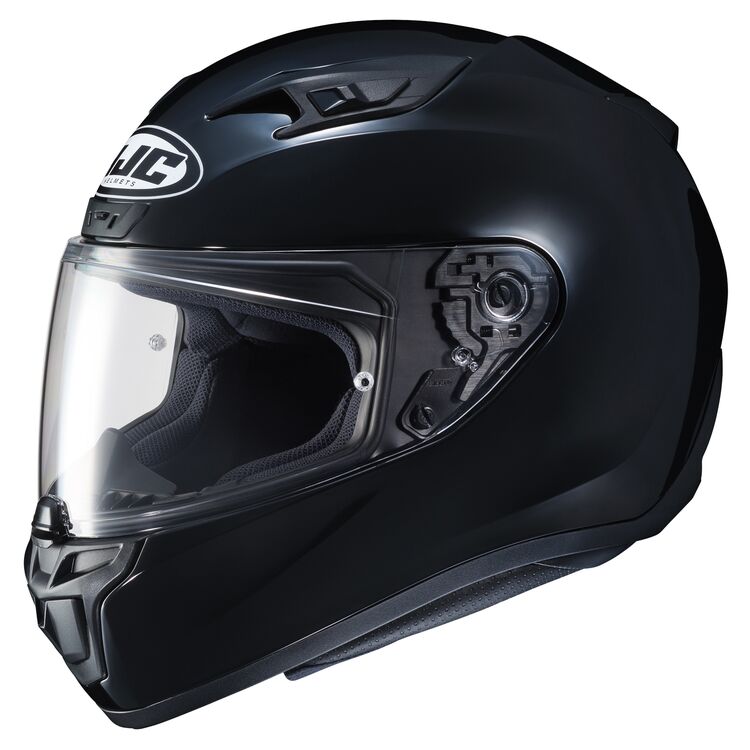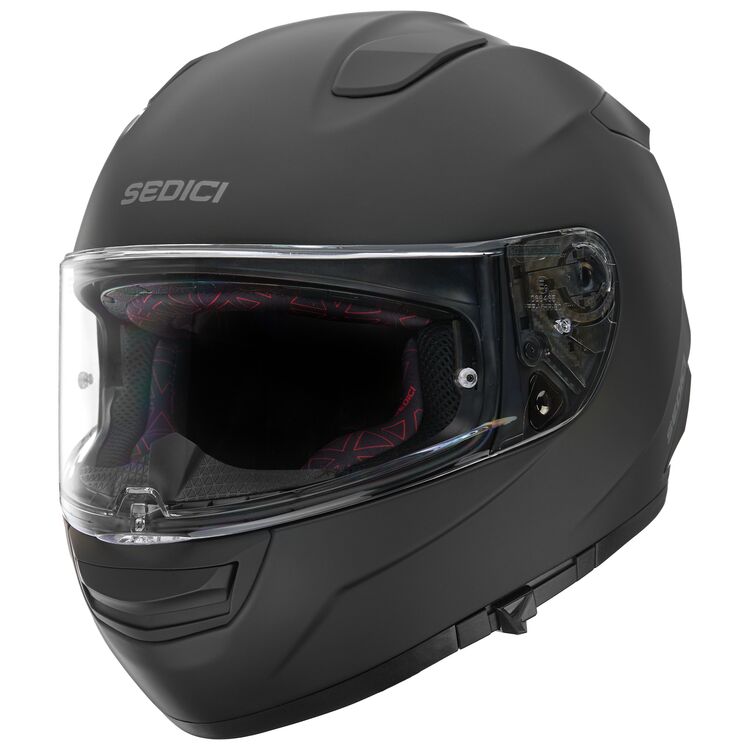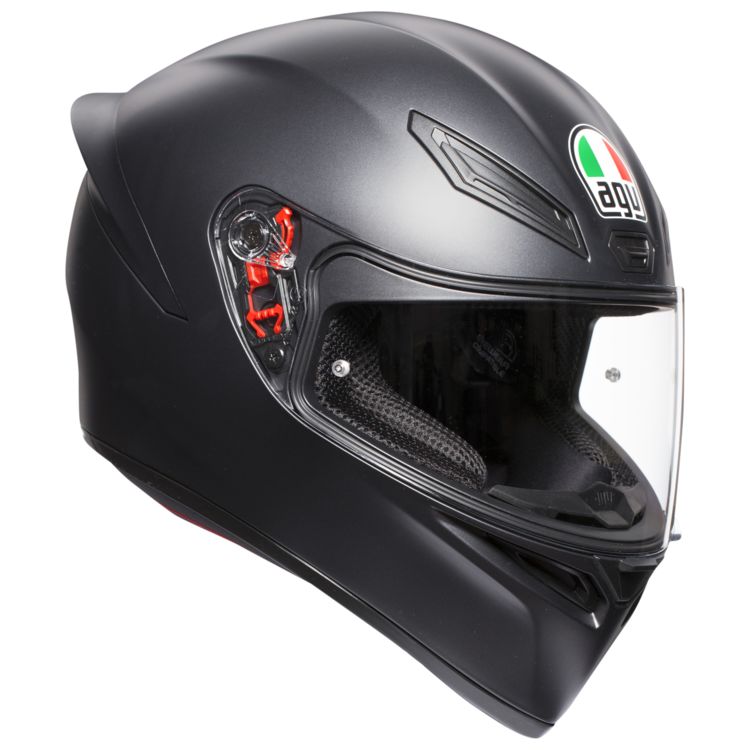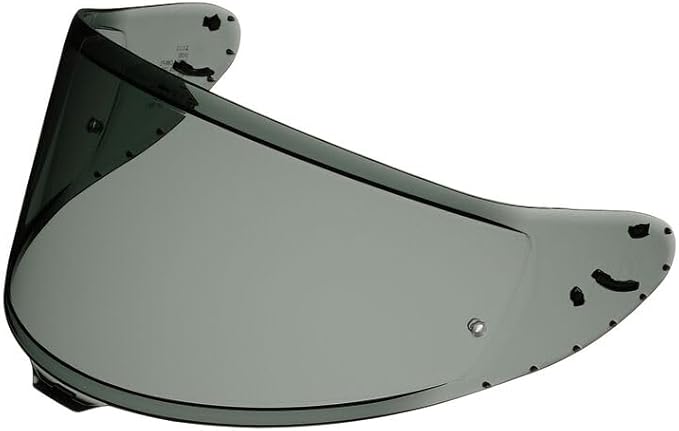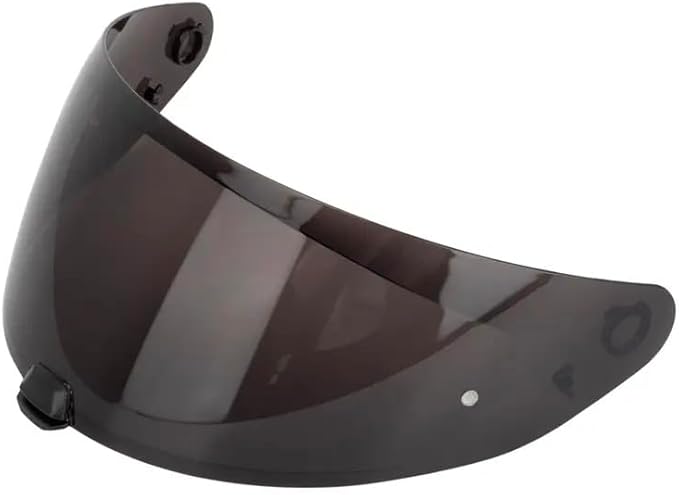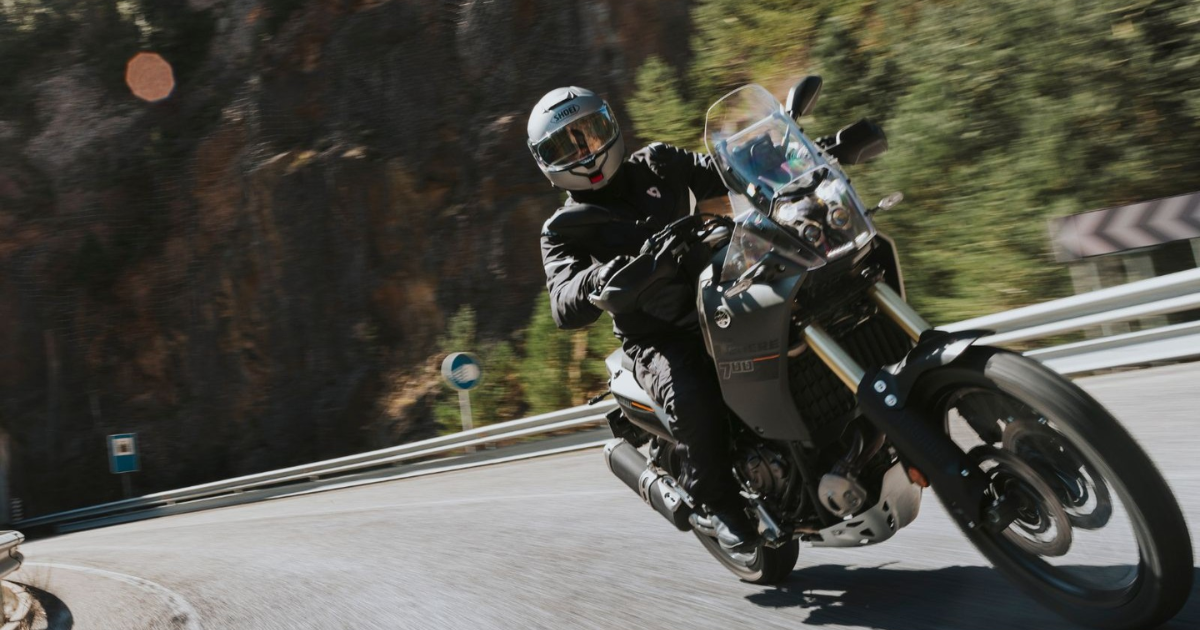
Shoei RF-1400 vs HJC i10: Street and Sport Touring Compared
left for contents
For riders comparing a premium Japanese full‑face to a value‑driven Korean alternative, the Shoei RF‑1400 and HJC i10 sit at opposite ends of the budget spectrum.
Both helmets carry Snell certification and modern styling, but their materials, weight, comfort and price differ significantly.
Below is an unbiased, conversion‑oriented breakdown to help you decide which lid is right for your general street and sport‑touring use.
Quick Take: Who Each Helmet Fits Best
Who should buy the Shoei RF‑1400
- Riders who prioritize a quiet ride and aerodynamic stability at highway speeds. Multiple owner reports note that the RF‑1400’s reshaped shell, vortex generators and thick cheek pads significantly reduce wind noise.
- Those seeking top‑tier safety and build quality. The RF‑1400 uses Shoei’s AIM+ multi‑ply composite shell and carries Snell M2020 and DOT certifications. A Pinlock Evo insert and quick‑release emergency cheek‑pad system (E.Q.R.S.) come standard.
- Intermediate‑oval or slightly round‑oval heads that demand long‑distance comfort. The adjustable Max‑Dry II interior is plush, absorbs sweat and is backed by a 5‑year warranty.
One of the top motorcycle helmets for street riding due to its incredible safety ratings, solid build construction, versatile shell for street and track riding, and reasonable price. Long term review here.
- Staff pick at Revzilla
- Quietest helmet on the market
- Excellent build quality
- Thick noise-sealing cheekpads
- Visor seal built like Fort Knox
- Snell certified for track use
- Lacking touring comfort features like drop down sun shield
If you’re curious how the RF-1400 has aged, check out our long-term review of the Shoei RF-1400, where we logged thousands of miles in varied conditions.
Who should buy the HJC i10
- Riders on a tight budget who still want Snell protection. The i10 is one of the cheapest Snell‑rated helmets and costs roughly one‑quarter of the RF‑1400.
- Commuters and occasional track‑day riders who value decent ventilation and bluetooth compatibility but don’t mind a heavier shell. The i10’s Advanced Channeling Ventilation System and Smart HJC‑ready design provide good airflow and easy comms installation.
- Those with an intermediate‑oval head shape (leaning slightly round) who appreciate a glasses‑friendly interior. Rider Magazine’s reviewer describes the fit as intermediate oval with a hint of round and notes it’s comfortable out of the box.
Snell-approved full‑face with strong ventilation and optics-ready shield—great protection and comfort at a budget-friendly price.
- Excellent airflow keeps riders cool even in heat
- Snell M2020 safety rating for high-impact protection
- Quick-change, pinlock-ready visor enhances visibility
- Built-in speaker pockets make it comms-ready
- Chin‑strap padding stops short—less neck comfort
- Shell surface scratches easily with minor impacts
The Shoei RF‑1400 commands roughly $500–$600 more than the HJC i10. The premium buys you a lighter composite shell, quieter aerodynamics, higher‑end materials and a longer warranty. If quietness, fit precision and long‑term durability matter most, the RF‑1400 is worth the upgrade. Budget‑conscious riders who can tolerate more weight and noise should consider the i10.
Specs Snapshot: Side-by-Side Numbers
| Specs | Shoei RF‑1400 | HJC i10 |
|---|---|---|
| Weight | ~3.6 lb / 1.63 kg (Size M). Billy’s Crash Helmets measured ~3.75 lb on another size. | ~3.7 lb / 1.68 kg (approx. 3 lb 9 oz). |
| Fit/Shape | Intermediate‑oval to neutral/round; snug but breaks in over time. | Intermediate‑oval leaning slightly round; glasses grooves and ample speaker room. |
| Shell/Materials | AIM+ Multi‑ply matrix of fiberglass and organic fibres with multi‑density EPS liner; four shell sizes and E.Q.R.S. | Advanced lightweight polycarbonate composite shell with multi‑density EPS. |
| Safety/Cert | Snell M2020 & DOT (USA); ECE 22.06 for European version; Emergency Quick‑Release System. | Snell M2020 & DOT (sizes up to 2XL); 3XL–5XL DOT only. |
| Ventilation/Weatherproofing | Three intake vents and enlarged exhaust; redesigned center/forehead vent adds extra intake; Vortex Generators and airtight shield seal for windproofing. | Advanced Channeling Ventilation with crown, chinbar and always‑open exhaust vents; Pinlock‑ready shield (insert sold separately). |
| Electronics/Bluetooth | Not purpose‑built but has recesses for speakers; installing systems may require trimming thicker cheek pads. | Smart HJC‑ready for integrated 10B/20B units; roomy speaker pockets support aftermarket systems. |
| Warranty | 5 years from purchase. | 3 years. |
| Street Price (typical) | US$650–$780 depending on graphics; sale prices occasionally fall to $540–$650. | US$150–$180 for solids and graphics. |
Which Rider Are You? Pick Your Match
Shoei RF‑1400
- You log long highway miles. The RF‑1400’s wind‑tunnel‑refined shell reduces drag and lift by 4 % and 6 % respectively. Thick cheek pads and vortex generators further cut wind noise, making it one of the quietest full‑face helmets on the market.
- You want premium safety and materials. The AIM+ shell uses interwoven fiberglass and organic fibres and comes with Snell M2020 certification and the Emergency Quick‑Release System.
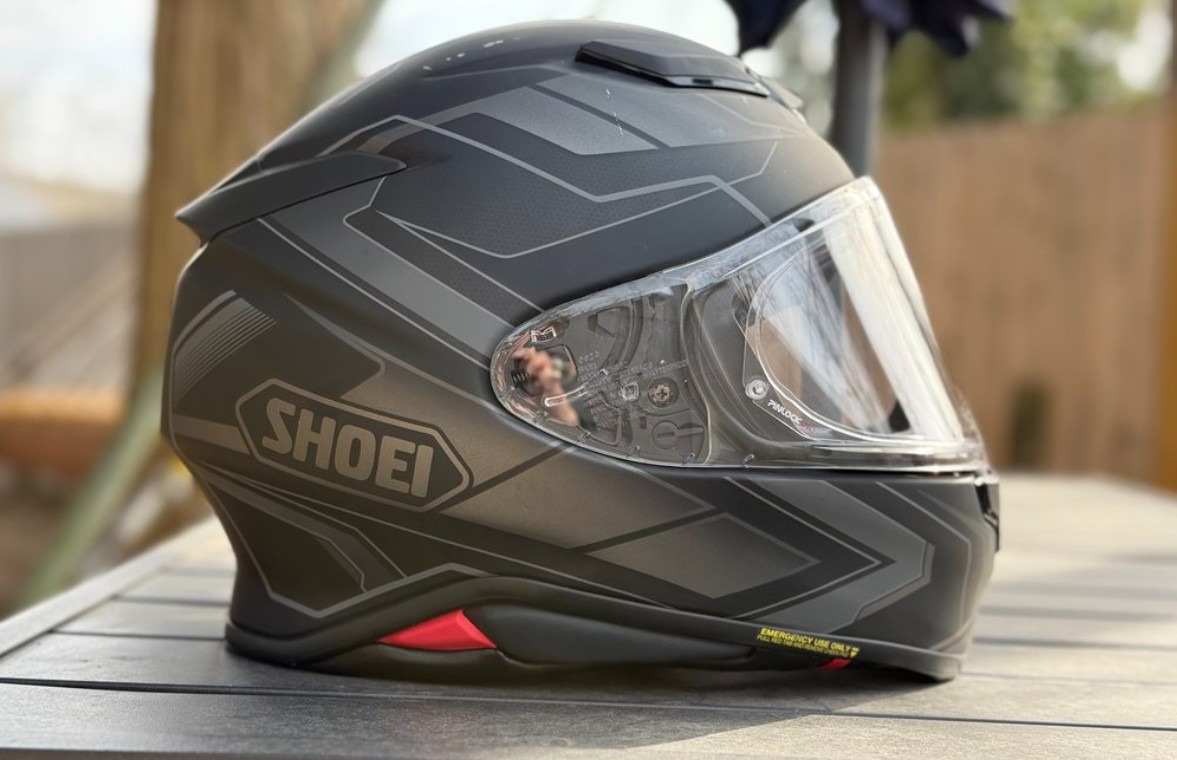
- You prefer a lighter lid. At roughly 3.6 lb, the RF‑1400 is noticeably lighter than the i10 and many composite competitors, reducing neck fatigue on day‑long rides.
- You value fit precision and comfort. Four shell sizes, removable Max‑Dry II liners and customizable padding provide a tailored fit. Riders with intermediate‑oval or round‑oval heads report excellent comfort once broken in.
- You appreciate extras included. The helmet ships with a Pinlock Evo anti‑fog insert, breath guard and chin curtain, and the 5‑year warranty offers long‑term peace of mind.
HJC i10
- You’re on a budget but still want Snell certification. At roughly $150–$180, the i10 is among the least‑expensive Snell‑rated full‑face helmets.
- You need solid ventilation. Multiple crown and chin vents plus always‑open exhaust ports provide good airflow for commuting and hot‑weather rides.
- You care about Bluetooth readiness. The i10 is designed to accept Smart HJC 10B or 20B units and has speaker pockets for other systems.
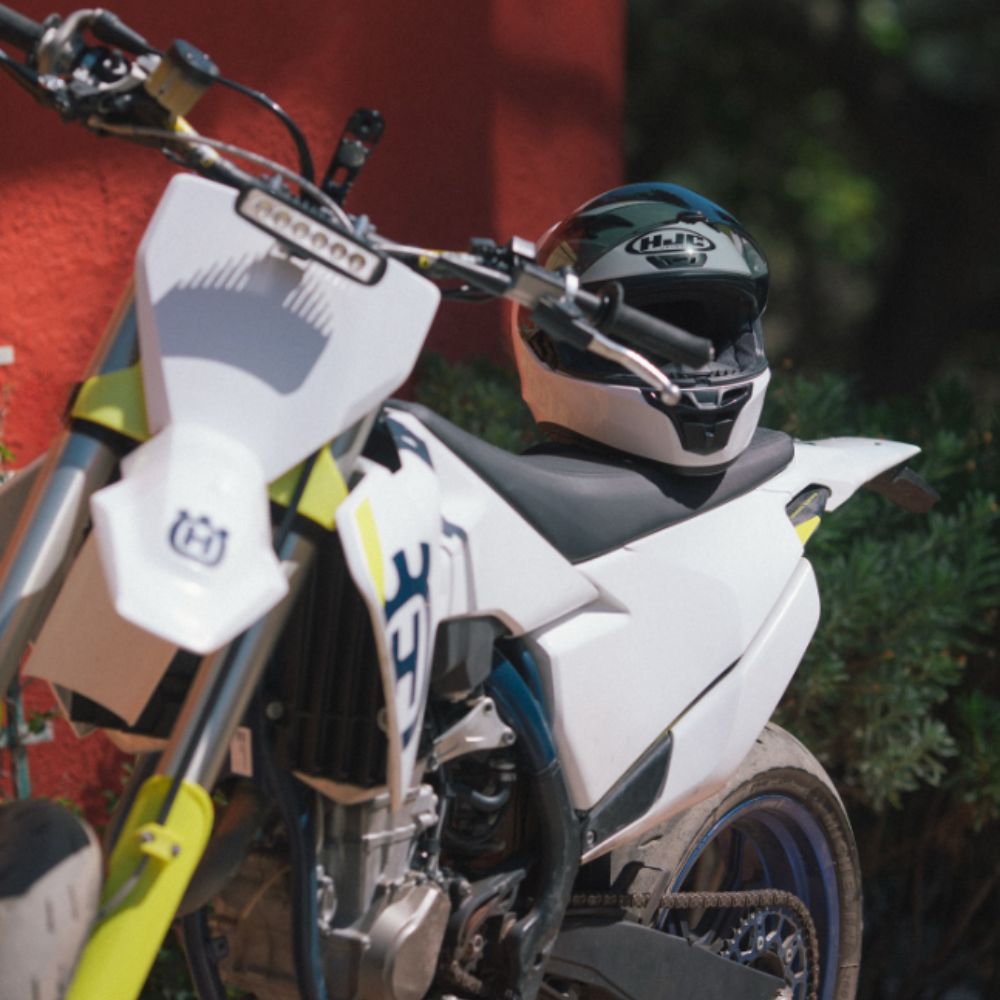
- You have a slightly rounder head or wear glasses. Rider Magazine’s reviewer notes an intermediate‑oval fit that leans toward round and praises the comfortable speaker cut‑outs and glasses grooves.
- You’re willing to compromise on weight and noise. At ~3.7 lb, the i10 is heavier than the Shoei and isn’t as quiet at highway speeds. The Pinlock insert must be purchased separately, and there’s no drop‑down sun visor.
What Riders Really Say
Shoei RF-1400

- Long-term users of the Shoei RF-1400 consistently praise its quietness and comfort.
- Our four-year review notes it remains one of the quietest full-face lids available.
- Soft cheek pads and an airtight shield seal help reduce wind noise.
- Owners highlight its balanced aerodynamics; one independent test found the new shell design reduces lift and drag significantly.
- Some riders mention the RF-1400 isn’t ultralight compared with racing helmets.
- Fitting Bluetooth systems may require trimming the thick cheek pads.
For a broader look at Shoei’s lineup and how the RF-1400 stacks up against models like the Neotec 3 or Hornet X2, see our top Shoei helmets list.
HJC i10
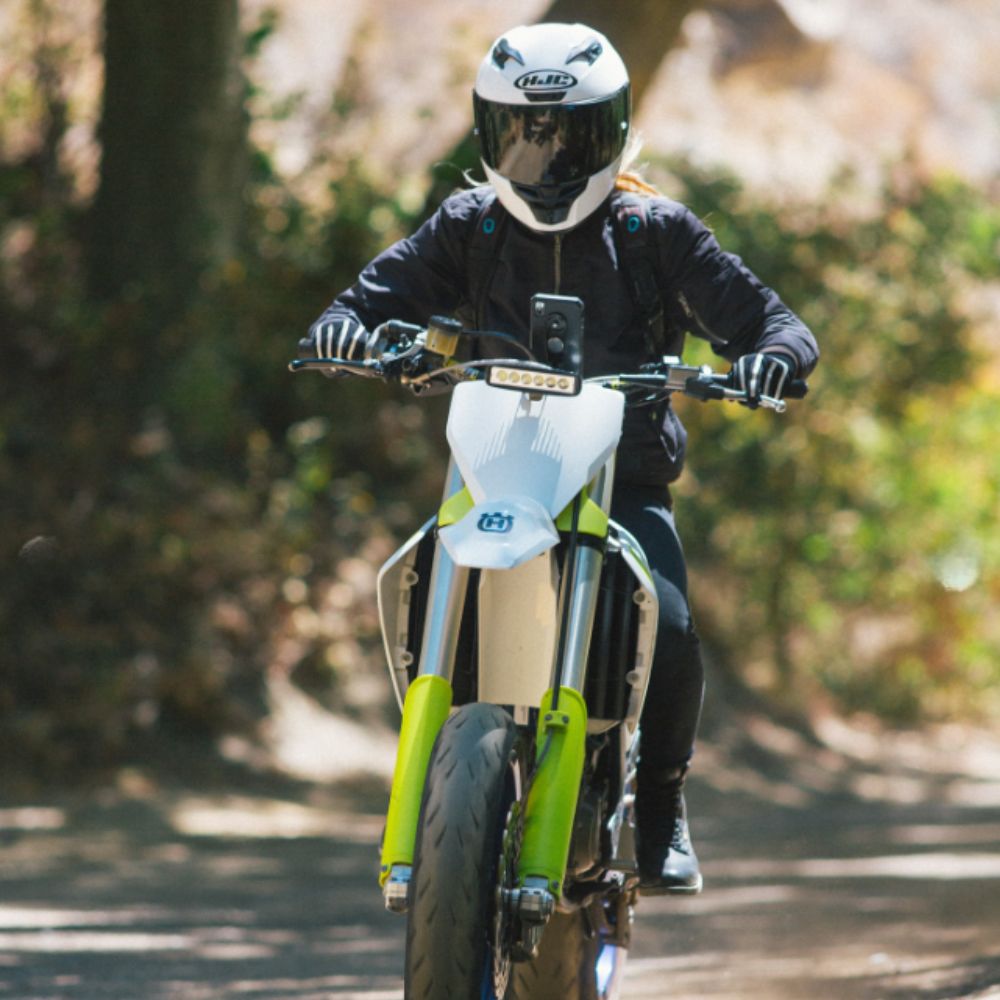
- Owners often describe the HJC i10 as a strong value pick with practical features.
- Multiple reports note it feels comfortable right out of the box.
- Ventilation performs well for everyday rides; crown and chin vents are easy to operate with gloves.
- Riders praise it as one of the most affordable Snell-certified helmets.
- Some caution that it is heavier than higher-end alternatives.
- Noise at highway speeds is a common complaint.
- A few miss added conveniences such as a drop-down sun visor or included Pinlock insert.
- Many still appreciate its Smart HJC-ready design and overall fair build quality.
We’ve also included the i10 in our scooter helmet roundup, since its value pricing and Snell approval make it an appealing choice for urban commuters.
Face-Off: How They Compare in the Saddle
Noise and Highway Comfort
Shoei RF‑1400: Shoei spent considerable time refining the RF‑1400’s aerodynamics. Wind‑tunnel testing produced a shell that reduces lift by 6 % and drag by 4 % compared with the previous RF‑1200. The helmet’s vortex generators and thick cheek pads help deflect turbulent air, while an airtight shield seal prevents whistling. In our long‑term review, riders consistently call it one of the quietest full‑face helmets.
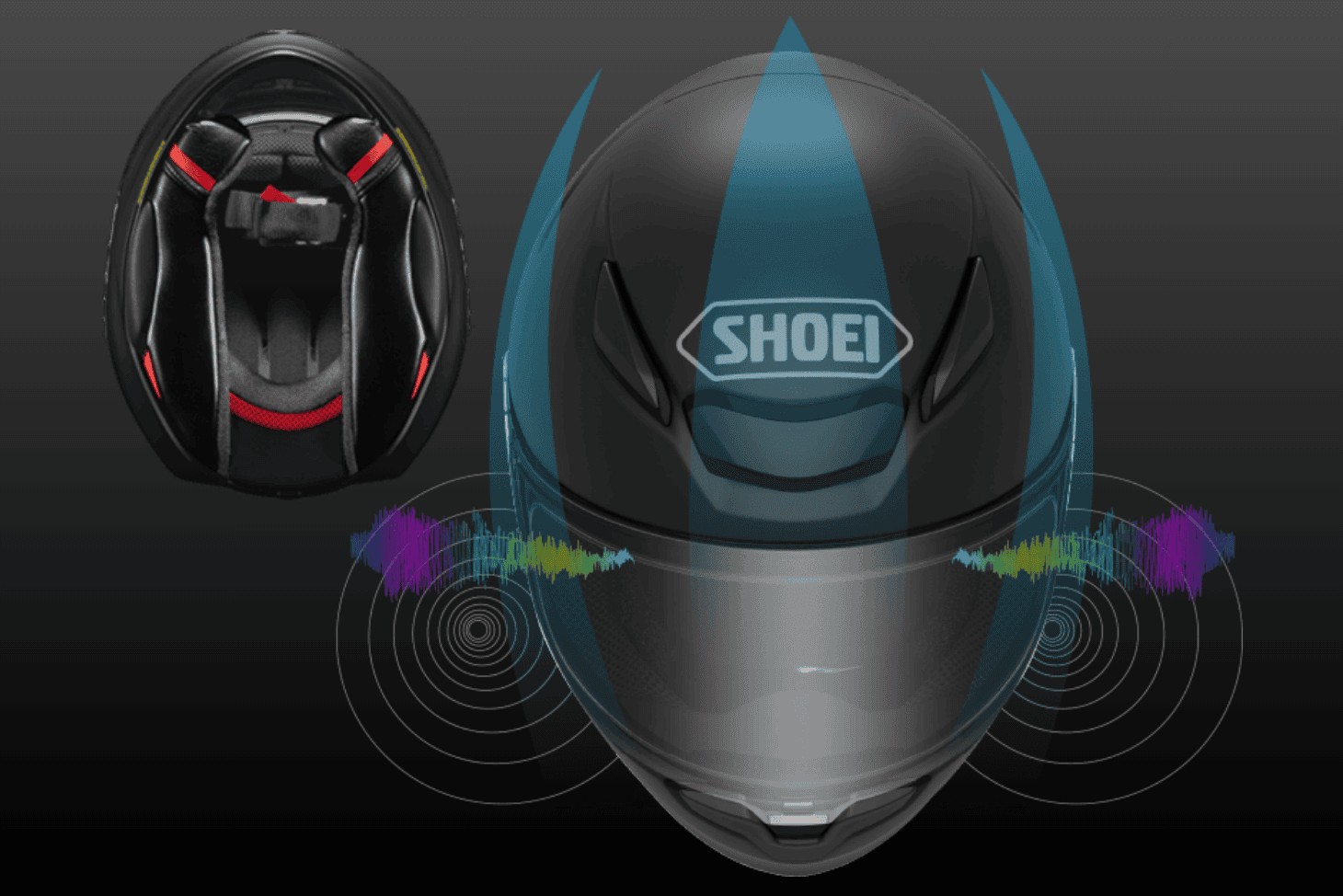
HJC i10: The i10’s polycarbonate shell lacks the same refinement, and independent reviews describe it as “not whisper‑quiet.” While the ventilation ports don’t produce excessive noise on their own, the helmet allows more wind roar at highway speeds than the Shoei. Riders recommending earplugs for long journeys.
Bottom line: If your general street and sport‑touring use involves extended highway trips or you’re sensitive to noise, the RF‑1400’s superior aerodynamics and thicker padding justify the price premium.
Weight and Fatigue
Shoei RF‑1400: Weighing around 3.6 lb and built from an AIM+ composite shell, the RF‑1400 is noticeably lighter than average for a Snell‑rated full‑face helmet. The lighter weight reduces neck fatigue on long days.
HJC i10: At roughly 3.7 lb, the i10 isn’t dramatically heavier but feels bulkier because of its polycarbonate shell and limited shell sizes. Rider Magazine notes that the size small i10 is about 5 oz heavier than a comparable premium helmet.
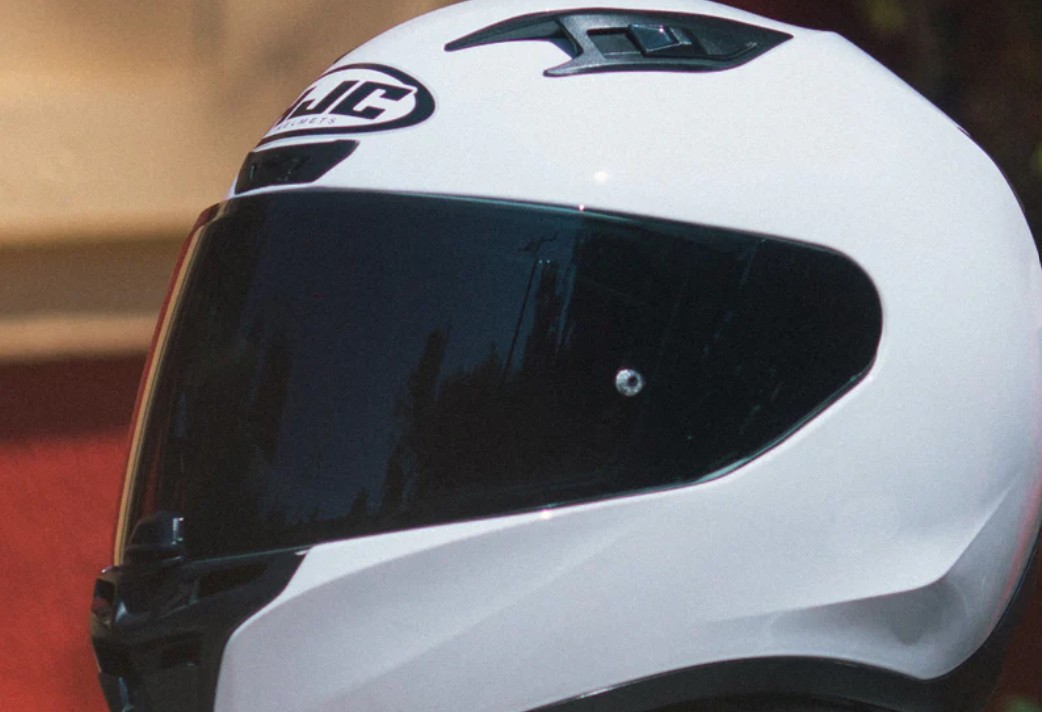
Bottom line: Although the weight difference is only a few ounces, that extra mass becomes noticeable during all‑day rides or quick head checks on the track. The RF‑1400 wins here.
Ventilation and Weather Range
Shoei RF‑1400: Shoei repositioned the forehead vent and added an extra intake hole to improve airflow, while a larger rear exhaust uses negative pressure to expel hot air. Riders report that the vents flow plenty of air when open yet seal well in rain or cold, making the RF‑1400 a versatile three‑season lid.
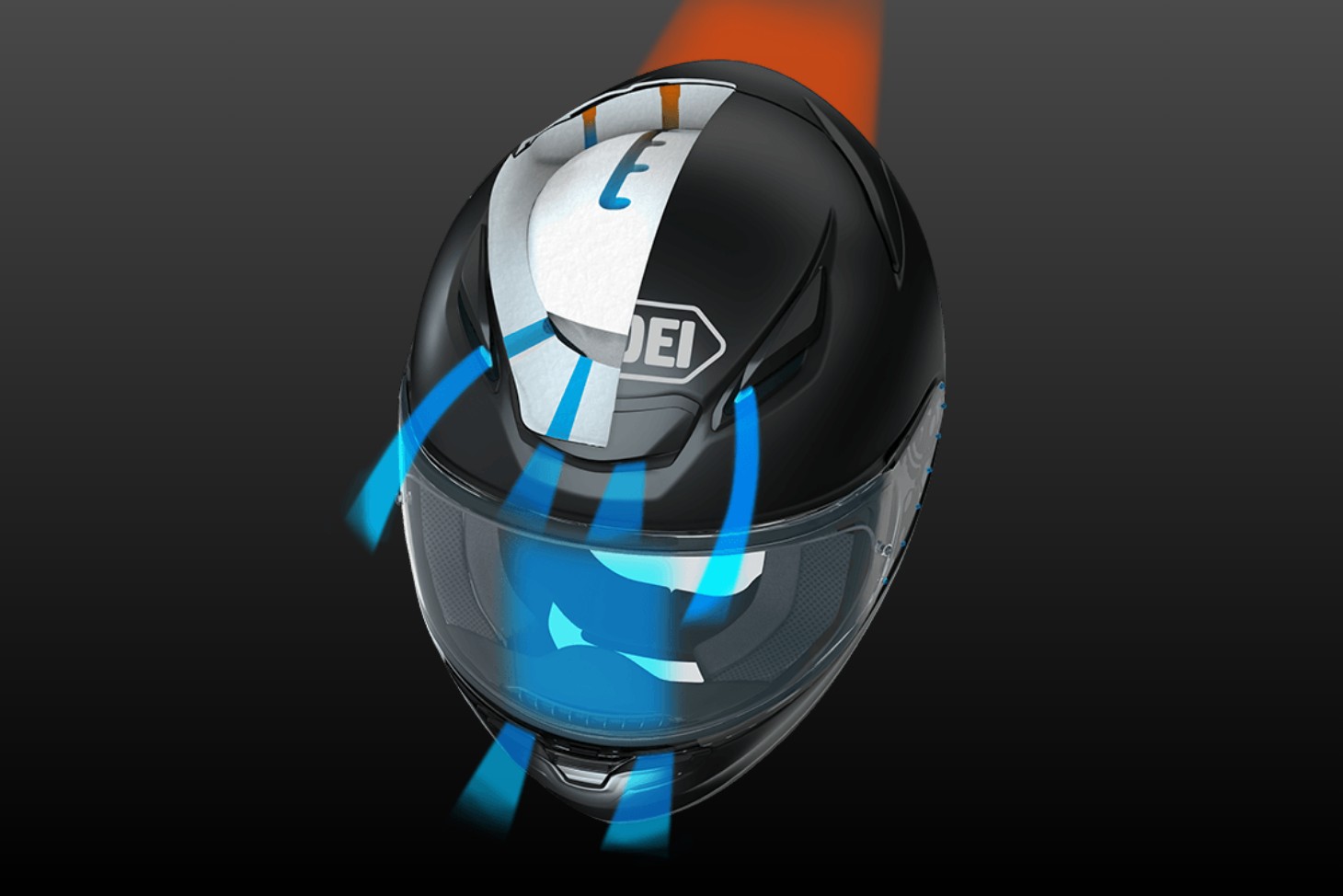
HJC i10: The i10 uses the Advanced Channeling Ventilation System with crown, chinbar and side vents, plus always‑open exhausts. Owners appreciate the airflow, especially in warm weather, but some find the top vent slider difficult to locate with gloves. The helmet lacks a chin curtain, which lets in more cold air during winter rides.
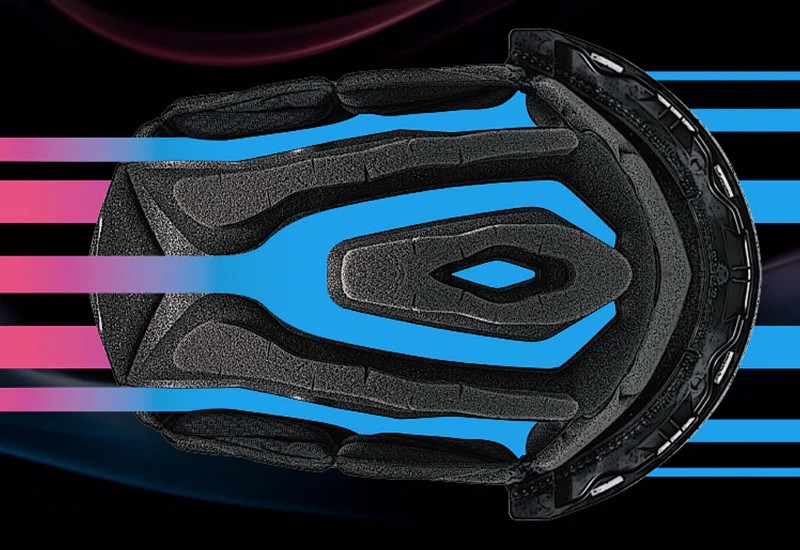
Bottom line: Both helmets ventilate well, but the RF‑1400’s vents offer more adjustability and a better balance between airflow and quietness. The i10 flows a lot of air but lets more noise and cold through.
Shield System and Visibility
Shoei RF‑1400: The CWR‑F2 shield system is Pinlock‑ready and includes an anti‑fog insert in the box. Shoei redesigned the base plate to allow a smoother “first position” crack for defogging and added a centre locking tab for even pressure distribution. The shield’s flat outside and 3D inner surface deliver clear peripheral vision. A quick‑release mechanism and emergency cheek‑pad system make removal easier.
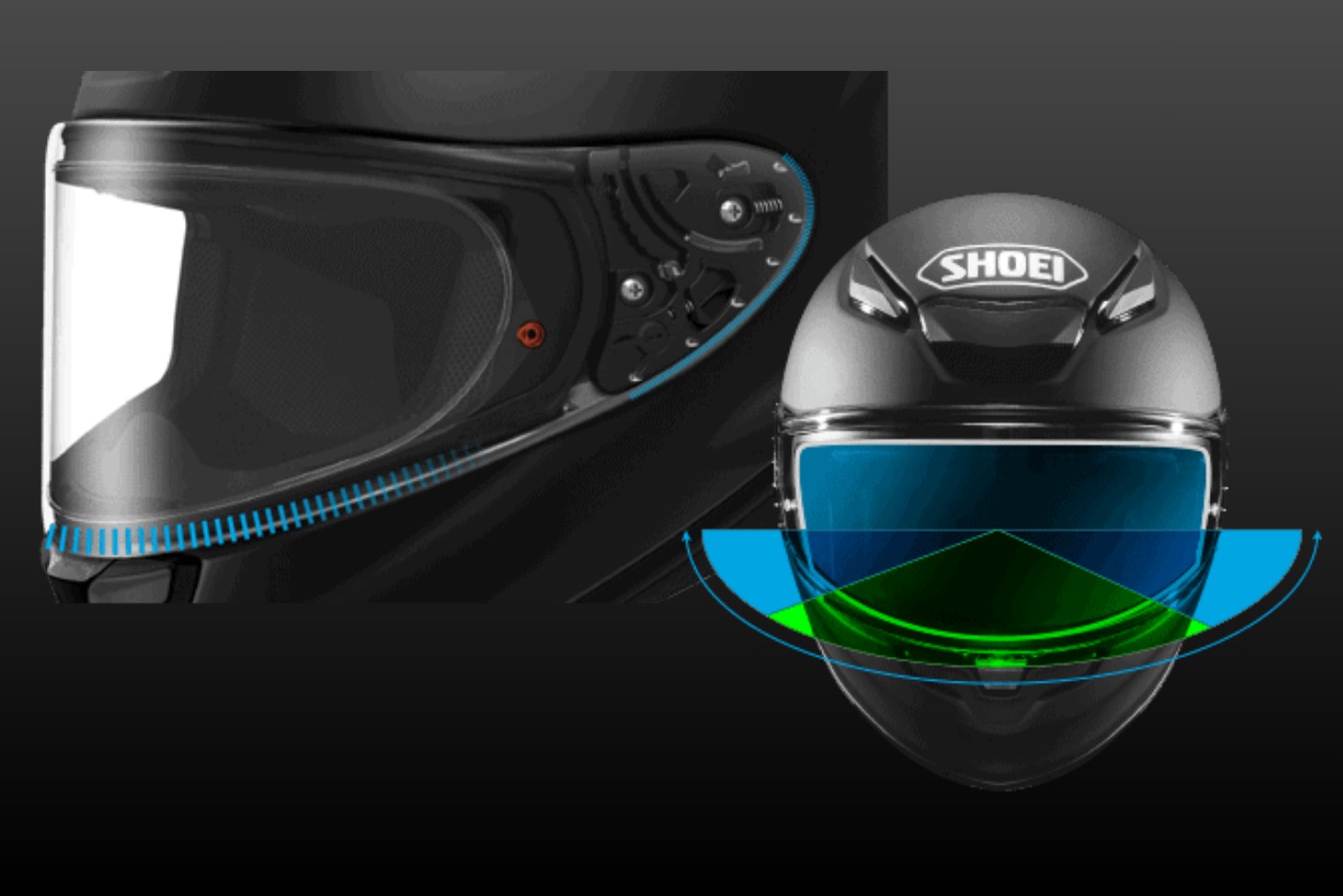
HJC i10: The i10’s HJ‑31 shield is Pinlock‑prepared, but the insert must be purchased separately. It offers good optical clarity, and HJC’s RapidFire replacement system allows tool‑less swaps. There is no internal sun visor; riders must swap shields for tinted options.
Bottom line: Shoei includes more out of the box—anti‑fog insert, better seal and smoother first‑crack position. The i10’s shield is functional but requires extras to match the Shoei’s performance.
Fit, Comfort and Features
Shoei RF‑1400: Four shell sizes and multiple EPS liners allow fine tuning of fit. The intermediate‑oval shape suits a wide range of heads, though some round‑oval riders also find it comfortable. The Max‑Dry II liner wicks sweat quickly, and thicker cheek pads help with noise reduction. The helmet includes an emergency quick‑release system and breath guard. Communication systems fit, but thicker padding may require trimming or aftermarket brackets.
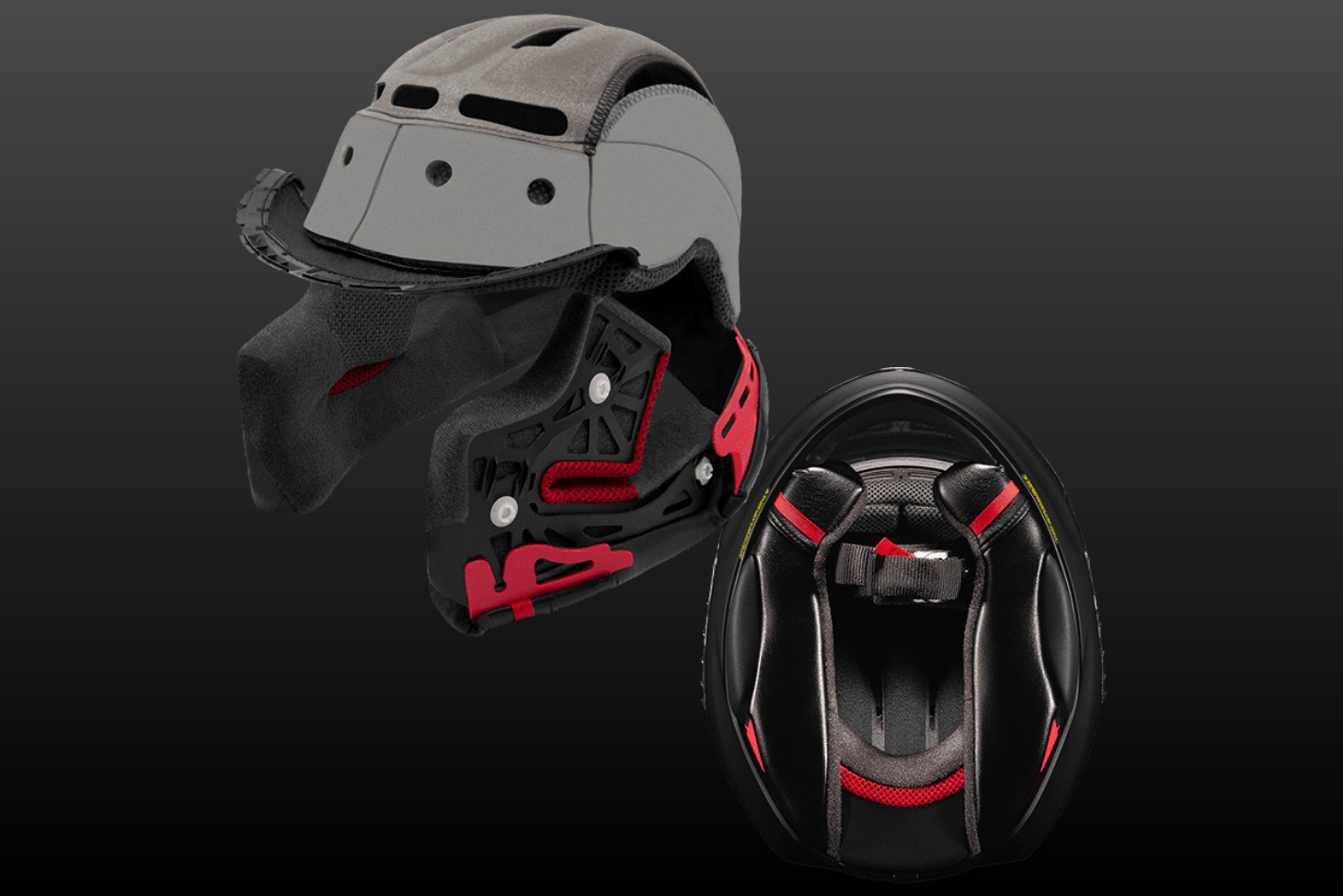
HJC i10: The i10 uses two shell sizes and four EPS liners. Fit runs intermediate‑oval leaning round, with plenty of room for speakers and a glasses groove. The SuperCool interior is moisture‑wicking and washable. There’s no drop‑down sun shield, and the helmet lacks EQRS or chin curtain. However, built‑in recesses make installing Smart HJC or aftermarket comms easy.
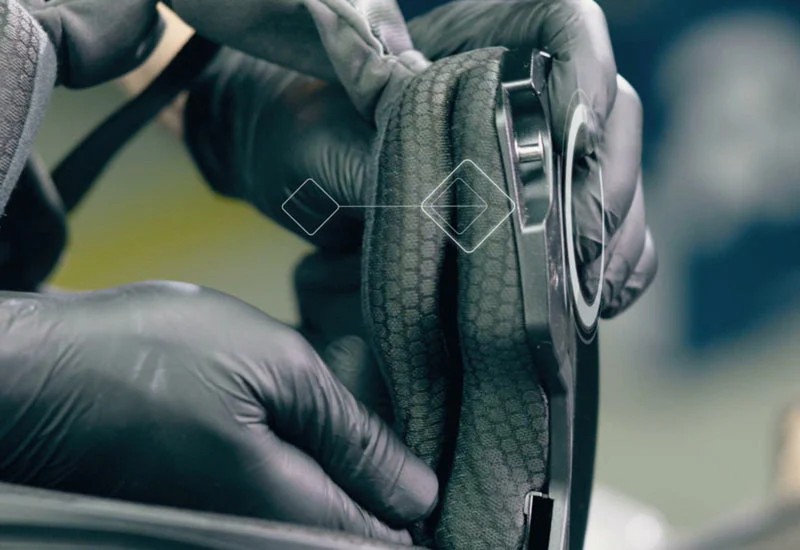
Bottom line: The RF‑1400 offers a plusher, more customizable fit and safety features like EQRS; the i10 is comfortable for glasses‑wearers and comms but lacks premium touches.
Build Quality and Finishes
Shoei RF‑1400: Hand‑built in Japan, the RF‑1400 uses premium materials and offers a refined finish. Paint and graphics are deep and crisp, and moving parts feel precise. Owners note that the 3D Max‑Dry interior retains its shape after years of use.
HJC i10: While solid for its price, the i10’s finish isn’t on par with Shoei’s. The polycarbonate shell can scratch more easily and the vent sliders feel less substantial. Cheek‑pad fabrics are comfortable but may wear faster than higher‑end materials.
Bottom line: You get what you pay for. The Shoei feels like a premium product, whereas the HJC is functional and durable enough for its cost.
Price vs. Perks: Where Your Dollars Go
When comparing these helmets, price is the most glaring difference. The HJC i10 starts around $150 and tops out near $180 for graphic models. For that money you get a Snell‑certified shell, good ventilation, a moisture‑wicking liner and Bluetooth readiness. It’s a strong value for commuters or riders who occasionally attend track days. However, compromises include heavier weight, more wind noise, no drop‑down sun visor and the added cost of a Pinlock insert. Warranty coverage lasts three years.
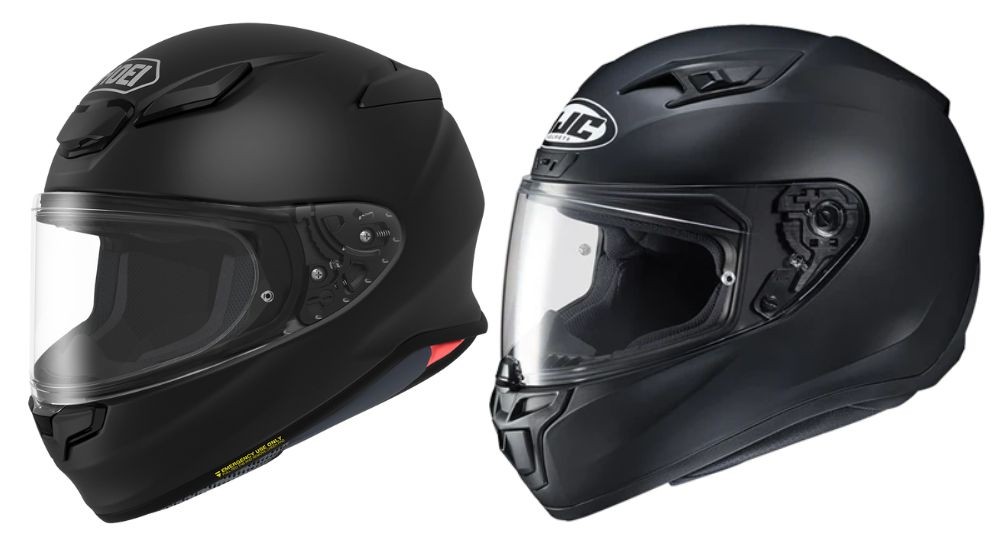
The Shoei RF‑1400 typically sells for $650–$780, though sale prices sometimes drop closer to $540. That price buys you a lighter composite shell, Snell and DOT certification, a Pinlock Evo insert, aerodynamic refinements that make the helmet quiet and stable, and a five‑year warranty. Fit customization is superior thanks to multiple shell sizes and adjustable padding. For riders who log serious miles, value quietness and comfort, or simply want the best materials, the RF‑1400 justifies its premium. For occasional riders or those who can tolerate more noise and weight, the i10 delivers more bang for the buck.
Comparable Options for Your Shortlist
Scorpion EXO‑R420: A budget Snell‑approved full‑face helmet similar in price to the i10. It suits riders who want track‑ready safety and don’t need fancy extras.
A race-ready helmet with an advanced polycarbonate shell and SNELL certification.
- Aerodynamic design reduces drag and fatigue
- KwikWick II fabric keeps you cool and dry
- Emergency release cheek pads for added safety
- Ships with a clear face shield only
Sedici Strada III: An intermediate‑oval composite‑shell helmet with an internal sun visor and Pinlock‑ready shield around the $250 mark. Great for commuters seeking a balance between features and cost.
A budget-friendly full-face helmet offering thoughtful comfort and ventilation, with modern interior design and solid safety, ideal for entry-level and everyday riders.
- Strong ventilation keeps head cool
- Comfortable laser-cut interior fit
- Aerodynamic shell reduces drag
- ECE-certified for trusted safety
- Padding feels less plush
- Wind noise at higher speeds
AGV K1 S: A lightweight ECE 22.06‑certified helmet with aggressive styling and good ventilation. Perfect for sport riders who value aerodynamics and don’t need a Snell label.
A lightweight, stylish ECE 22.06–certified full-face helmet that delivers sharp aerodynamics, strong ventilation, and excellent highway noise reduction.
- Comfortable and balanced feel on long rides
- Well ventilated, stays cool even at speed
- Excellent wind-noise control on highways
- Quick-release visor and double‑D strap simplify use
- Vents can be stiff and hard to operate
- Visor lacks a secure closed lock and may leak in rain
If you’re cross-shopping within Shoei, our RF-1400 vs RF-SR comparison breaks down how the RF-1400 differs from Shoei’s more budget-friendly entry-level full face.
Frequently Asked Questions
Is the Shoei RF‑1400 worth the price?
For riders who prioritize quietness, comfort and premium materials, the RF‑1400’s high price makes sense. You get a multi‑composite shell, refined aerodynamics, included Pinlock Evo insert and a five‑year warranty. If you mainly ride short distances at modest speeds, the value proposition diminishes.
Does the HJC i10 come with a Pinlock insert?
No. The i10’s HJ‑31 shield is Pinlock‑prepared, but you must purchase the insert separately.
Quick-fix anti-fog insert tailored for HJC i10 and i70 helmets—MaxVision clarity meets hassle-free installation for clear vision in any weather.
- Superior anti-fog performance for daily commutes
- MaxVision design enhances peripheral clarity
- Simple, tool-free installation in Pinlock-ready shields
- Reliable compatibility with HJC i10/i70 visors
- Some users report minor glare or light distortion
- Wide size fits may need slight trimming for perfect seal
The Shoei RF‑1400 includes a Pinlock Evo insert in the box.
What head shapes do these helmets fit?
The RF‑1400 suits intermediate‑oval and slightly round heads and comes in four shell sizes for precision fit. The i10 also fits intermediate‑oval heads but leans toward round and offers only two shell sizes.
Can you wear glasses with either helmet?
Yes. Both helmets accommodate glasses. The i10 features dedicated glasses grooves in the liner. The Shoei doesn’t have specific grooves but most riders find the plush padding compresses enough for eyewear.
Do they have internal sun visors?
The RF‑1400 lacks an internal sun visor; you swap shields for tinted options. The i10 also lacks a sun visor, which is common for Snell‑rated helmets because integrated visors can complicate certification.
Pinlock-ready Shoei CWR-F2 shield offers distortion-free optics, strong UV protection, and improved aerodynamics—designed for clear, fatigue-free vision | Durable replacement visor with Pinlock-ready design delivers fog-free visibility, enhanced UV protection, and scratch resistance—built for HJC i10 and i70 helmets. |
|
|
|
|
Pinlock-ready Shoei CWR-F2 shield offers distortion-free optics, strong UV protection, and improved aerodynamics—designed for clear, fatigue-free vision
- Distortion-free 3D optics enhance visual clarity
- UV protection blocks ≥99% of harmful rays
- Aerodynamic design reduces wind noise at speed
- Tool-free quick-change makes swaps fast and easy
- May notch fog in extremely cold, humid conditions
Durable replacement visor with Pinlock-ready design delivers fog-free visibility, enhanced UV protection, and scratch resistance—built for HJC i10 and i70 helmets.
- Pinlock-ready shield ensures clear vision in wet conditions
- Scratch-resistant finish keeps views sharp and long-lasting
- 99% UV protection guards against harmful sun exposure
- Straightforward swap-in installation without tools
- Limited to helmets with HJ-31 side plates only
- RST mirror finishes might introduce slight visual distortion in some lights
Are they compatible with Bluetooth communicators?
The i10 is designed to accept Smart HJC 10B/20B units and has generous speaker pockets. The RF‑1400 doesn’t have dedicated comms recesses, but riders successfully install Sena or Cardo units by adjusting the padding or using helmet‑specific mounts.
Both helmets offer strong safety credentials, but your priorities—comfort, noise, weight and price—will dictate which is the better fit for your general street and sport‑touring use. Use the table above to match the right lid to your riding style and budget.
Not sure your comms unit will fit?
Sometimes the perfect helmet comes with a catch—it’s designed around a specific Bluetooth unit. That can make it tough if you prefer something different. With an adapter from Tubs Jackson, you can get a factory fit for any comms units on helmets you actually want to ride in.
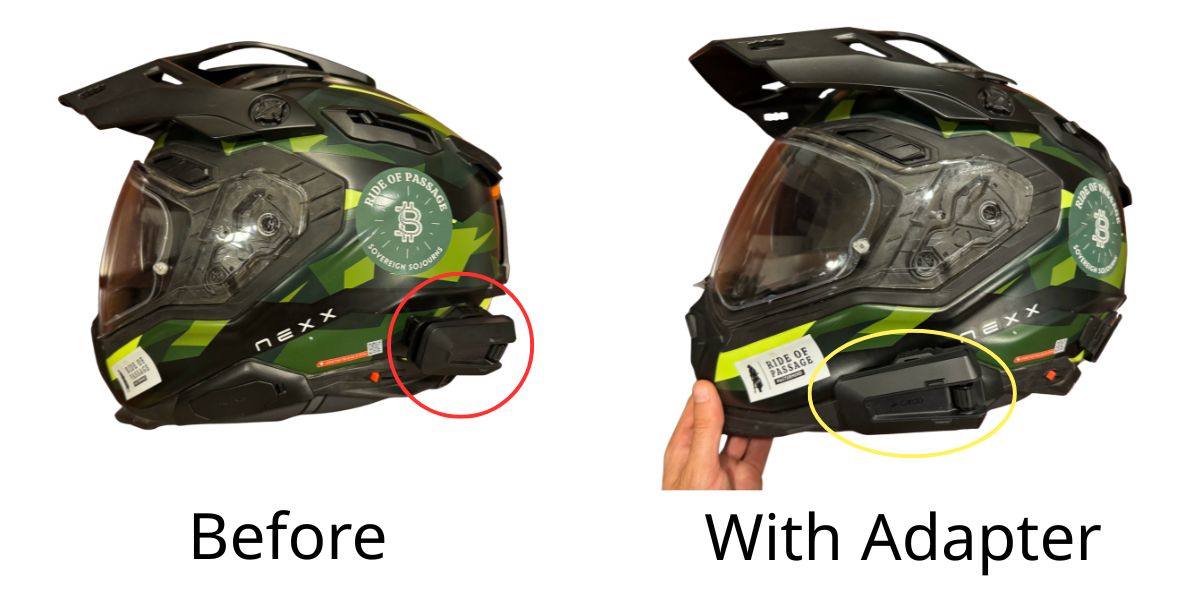
Tubs Jackson is a weird name, I know, but I have their adapter in my Nexx X.WED3 helmet and it’s rock solid. Much nicer than reaching way back to where I had the sticky mount before. I wish I’d thought of this idea.
Tip: Get FREE SHIPPING just by buying here or using code BETTERONTHEROAD at checkout.
Related

Carbon Fiber Modular Helmets: Ultimate Flip-Up Lids
Discover carbon fiber modular helmets that deliver flip-up convenience, lightweight strength, and serious protection for every ride.


